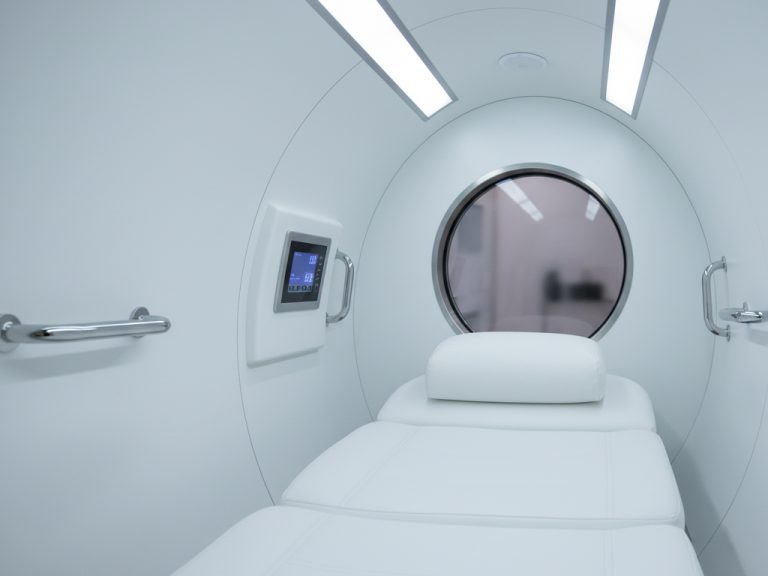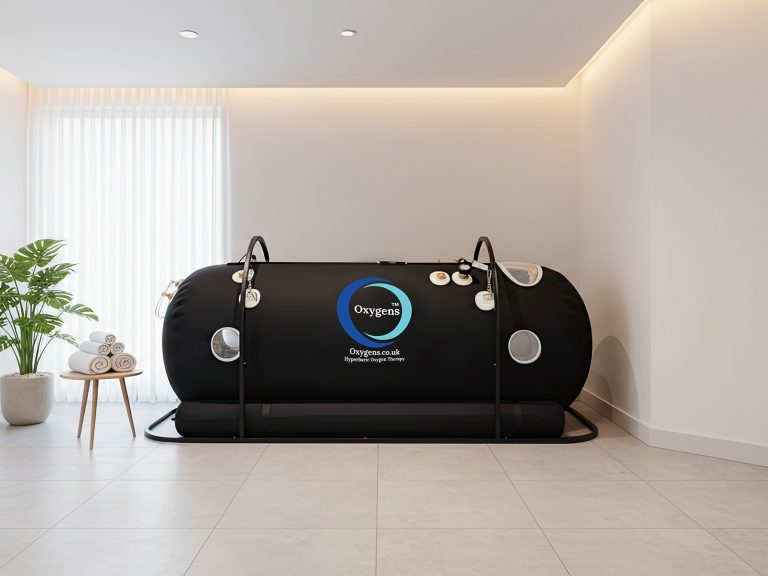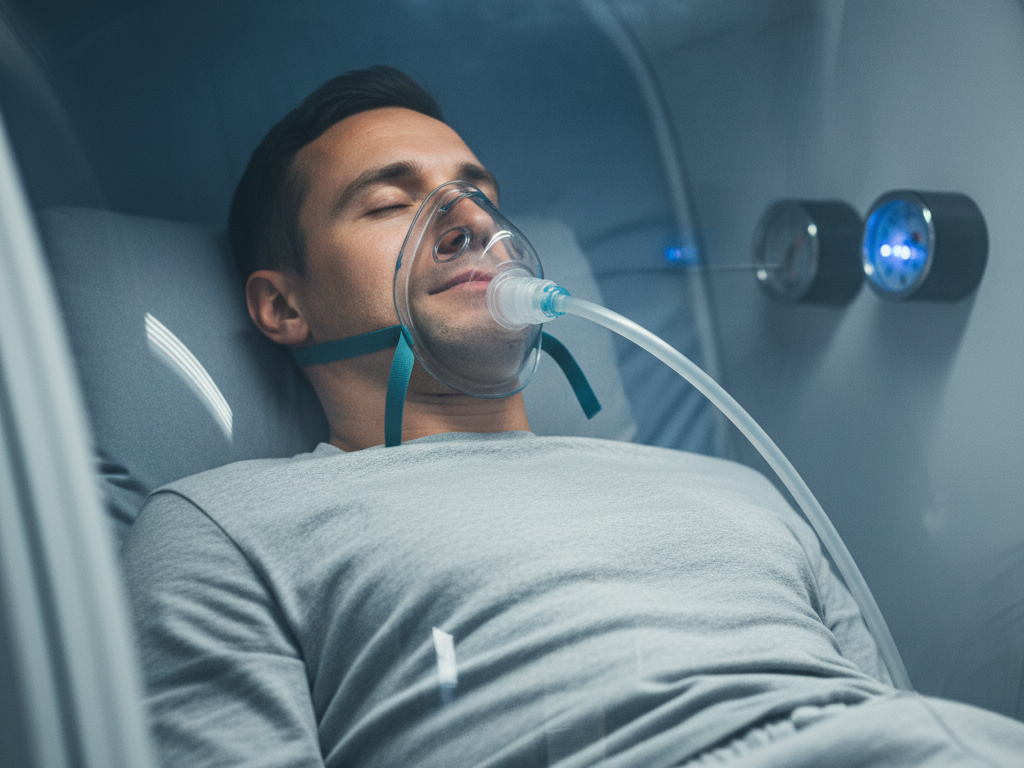Hyperbaric oxygen therapy (HBOT) has become increasingly popular for both recovery and wellness purposes. Many people are curious about home hyperbaric chambers as a convenient way to experience the benefits of increased oxygen levels without visiting a clinic. One of the most common questions from first-time users is: how long can a person stay in a hyperbaric chamber during a session?
The answer depends on several factors, including the type of chamber, the pressure used, the recovery or wellness goals, and individual tolerance. This blog will explore these factors, provide typical session durations, and discuss safety considerations for both home and clinical HBOT.
What Is a Home Hyperbaric Chamber?
A hyperbaric chamber is a sealed enclosure in which the air pressure is raised above normal atmospheric pressure, and the person inside breathes oxygen at increased pressure. This therapy is often referred to as Hyperbaric Oxygen Therapy (HBOT). By increasing the amount of oxygen in the body’s tissues, HBOT supports healing processes in wounds, infections, radiation injuries, and other conditions. (Cleveland Clinic)
There are two common types of chambers:
- Monoplace – a single-person chamber, typically you lie down and breathe oxygen directly. (Cleveland Clinic)
- Multiplace – a larger chamber accommodating two or more individuals, where they breathe oxygen via masks or hoods. (Hopkins Medicine)
Because of the differences in equipment and personal movement, session protocols may vary.
Typical Session Lengths: What Do the Studies & Clinics Say?
Here’s a summary of what reputable clinics and literature say about how long a typical HBOT session lasts:
- According to the Cleveland Clinic, “sessions usually last between one and two hours.” (Cleveland Clinic)
- Johns Hopkins Medicine reports that sessions “can last from 45 minutes up to 300 minutes (5 hours) depending on the reason for the treatment.” (Hopkins Medicine)
- The Michigan Medicine site notes “the actual treatment takes about 110 minutes; 90 minutes of oxygen with two 10-minute air breaks.” (Michigan Medicine)
- Other sources for wound-care clinics suggest 90–120 minutes is common. (RWJBarnabas Health)
- Some wellness or mild hyperbaric sessions (lower pressure) run 60–90 minutes. (Restore Hyper Wellness)
In short: A safe general estimate is about 60 to 120 minutes for standard HBOT sessions, with some variation up or down depending on the exact protocol.
Why Does the Duration Vary?
Several factors influence how long you stay in a hyperbaric chamber:
1. Condition Being Treated
The more serious or longstanding the condition (for example, chronic non-healing wounds, radiation injury, serious infections), the more aggressive the protocol might be, possibly a longer time or higher pressure. (UVA Health)
For mild wellness uses, the time might be shorter.
2. Chamber Pressure & Protocol
Higher pressure (for example 2.4 ATA and above) may require more careful compression/decompression and monitoring, possibly lengthening the session. For example one study used ~90 minutes at 2.4 ATA. (PMC)
3. Air Breaks and Compression/Decompression Time
Many protocols include periods of breathing “normal air” to reduce oxygen toxicity risk, as well as gradual pressurisation and depressurisation (to avoid barotrauma). Thus the “oxygen time” might be less than the total time in chamber. (Michigan Medicine)
4. Personal Tolerance and Safety Considerations
If a person has difficulty equalising ear pressure, or has anxiety/claustrophobia, the session may need adjustments or shorter duration. Also safety monitoring may extend total time. (My Health Alberta)
5. Facility/Equipment Type
“Mild” hyperbaric chambers (lower pressure) or wellness-oriented sessions may be shorter (60–90 minutes) compared to full HBOT (90–120+ minutes). (Restore Hyper Wellness)
So Exactly How Long Can a Person Stay?

Taking all factors into account, here’s a refined answer:
- Many standard HBOT sessions last 60 to 120 minutes.
- Some protocols may be as short as 45 minutes (rare) or as long as 3–5 hours in specialised cases. (Hopkins Medicine)
- The duration inside the chamber should be determined by a healthcare provider who sets the treatment plan.
- For wellness or mild HBOT uses, sessions of 60–90 minutes are common.
Importantly: the duration in the chamber is distinct from the number of sessions you’ll need over weeks. Many conditions require multiple sessions, sometimes 20, 30 or more.
What Happens During the Session?
While HBOT is generally safe when conducted properly in accredited facilities, staying in the chamber carries several safety considerations:
- Ear barotrauma (ear‐pressure injuries) is among the most common side-effects. (Cleveland Clinic)
- Claustrophobia or anxiety in small chambers. (Cleveland Clinic)
- Oxygen toxicity is a rare but real risk (especially if breathing 100% oxygen for long periods under pressure). (Cleveland Clinic)
- individuals with certain lung conditions (eg pneumothorax) may not be suitable. (Cleveland Clinic)
Ensure the chamber and facility follow proper standards (pressure testing, high quality materials) and have qualified monitoring staff.
How Many Sessions Will You Need?
Duration per session is only part of the story. The number of sessions required is driven by the condition. For example:
- Acute conditions (eg carbon monoxide poisoning) may require 1-3 treatments.
- Chronic wounds or radiation injury may require 20–40 or more sessions. (UVA Health)
- Many clinics schedule treatments daily (Monday to Friday) for several weeks.
Thus when you ask “how long can I stay,” you also want to ask “how many stays will I need?”
Why Choose a High-Quality Manufacturer – A Brief Note

If you are considering installing a hyperbaric chamber (for a clinic or wellness centre), or simply want assurance your treatment is in a high-quality unit, manufacturing quality matters. Let’s take the example of the company Oxygens (UK) as an illustration of what good manufacturing standards look like:
- Chambers built in the UK, not just imported & rebranded.
- Made with industry-standard materials: high-frequency welded TPU (not glued seams).
- Pressure-tested beyond operating pressure (e.g., designed for 1.5 ATA but tested to 1.7+).
- Certified components (oxygen concentrator, compressor, high-quality masks/tubing).
- Smart design features (e.g., triple-zip chamber, three independent pressure valves).
- Electromagnetic compatibility (EMC) compliance – ensures the chamber’s electronics do not interfere with, or get interfered by, surrounding devices (for home or clinic installations).
- Professional installation & ongoing support.
If you’re assessing a centre or considering purchase, ask about these details: materials, certification, testing, safety features, servicing. These affect reliability, safety, and longevity of the chamber.
Practical Tips Before You Enter a Session
Here are my recommendations for anyone about to enter a hyperbaric chamber:
- Use the restroom just before entering. The session length includes pressurisation & depressurisation phases.
- Avoid heavy meals or alcohol immediately before. Some centres recommend light meals and good hydration.
- Mention any medications you are taking. Some may influence suitability. (Michigan Medicine)
- Be prepared for ear pressure/pop sensations. Chew gum or swallow when you feel the pressure change.
- Choose a facility where you are comfortable asking questions and the staff explains the protocol, expected session length, and any air-breaks or monitoring.
- If you have anxiety or claustrophobia, ask about their setup, monitor ratio, or perhaps consider a multiplace chamber where a technician stays inside.
After the session, allow some rest time and ensure you’re hydrated. If you feel very fatigued, mention it to your provider. (mvswoundcare.com)
Summary
In conclusion, the length of time a person stays in a hyperbaric chamber depends on many factors. For most therapeutic HBOT sessions you’re looking at approximately 60–120 minutes. Some may be shorter, some longer. More importantly, the full treatment plan may span multiple sessions over days or weeks.
If you are undergoing hyperbaric treatment, ask your provider:
- What is the session duration for my condition?
- Are there air breaks or special compression/decompression phases?
- How many sessions will I likely need?
- What pressure (ATA) will be used?
- What safety monitoring is in place?
With the right facility, protocols, and equipment the therapy can be safe, comfortable, and effective.

